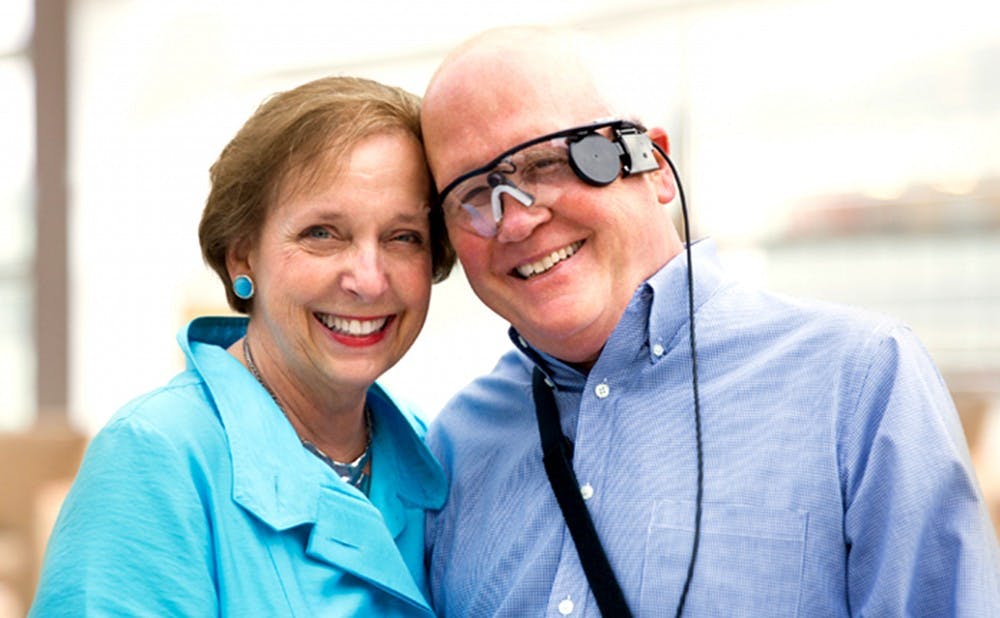For 33 years, Larry Hester's world was dark—but thanks to a "bionic eye" implanted by Duke Eye Center, he is now getting a second chance at sight.
Hester, a 66-year-old tire salesman from Raleigh, went blind due to a degenerative eye disease called retinitis pigmentosa when he was in his early 30s. But last month a surgery at Duke Eye Center made him the seventh person in the country to receive a so-called bionic eye—a visual aid known as the Argus II Retinal Prosthesis Device. After a recovery period of several weeks, the eye has now been "turned on," and for the first time in decades, Hester can enjoy simple pleasures such as the sight of his wife's face and games with his granddaughter.
Hester was surrounded by friends and family when his eye was activated by Dr. Paul Hahn, the surgeon who implanted the Argus. With the push of a button, Hahn was able to take Hester out of the darkness he had lived in for decades.
“Within seconds, I could see flashes of light, which is what I had been told would happen,” Hester said, noting that the flashes corresponded to prominent objects around him.
The eye will not fully restore Hester's vision, Hahn noted. Instead, it allows him to see flashes of light that let him judge distances and distinguish objects. But though Hester's progress might seem limited, Hahn said, it is a significant advancement compared to Hester's previous sight—when he could see no light and could not tell when the sun was shining.
The most significant advantage of the bionic eye for a patient such as Hester is becoming better able to navigate and identify objects like doorways and crosswalks, Hahn said.
Hester said that the bionic eye has changed his life, noting that he can now see flashes of light to let him know when his wife is nearby after years of locating her only by her voice.
“I can reach out and touch her cheek without poking her eye,” Hester said.
He said that he can tell where the moon is in the night sky, which he could never do before. He even had success participating in a game of darts with his granddaughter.
“When I looked at the dart board, it started flashing and I was able to hit the boards with all five darts,” Hester said.
But the transition is not without challenges. Hahn said that adjusting to life with the bionic eye is similar to learning a new language, adding that he will continue to monitor Hester's progress as he adjusts to the Argus.
“He is undergoing rehabilitation, and we are still learning what he can do with the eye,” Hahn said.
Hester described the change as overwhelming at times, particularly when first able to see things that he had long known about but never viewed. When he was able to identify where the flowers in his wife’s garden were located, for instance, he was so in awe that he had to sit down.
“I want to let others with vision problems know that there is a glimmer of hope and to not give up," Hester said. "I am convinced that this technology will advance and help so many more people.”
Hester was the first patient in North Carolina to be implanted with the Argus, but Hahn noted that he is optimistic that the procedure will become more popular.
“Hopefully, these procedures will continue around the country, and especially at Duke,” Hahn said.
Get The Chronicle straight to your inbox
Signup for our weekly newsletter. Cancel at any time.

